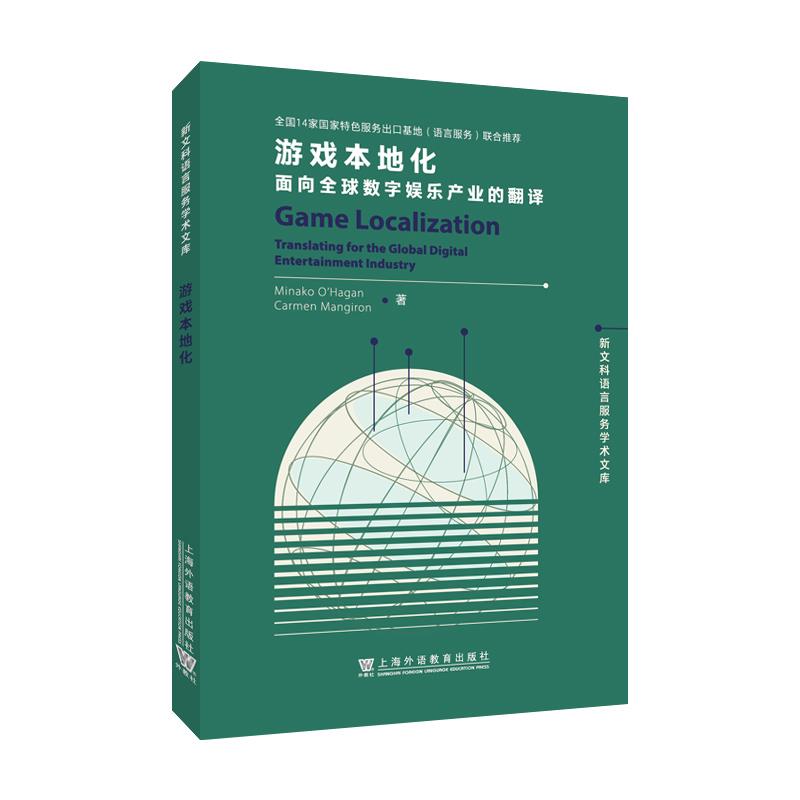
新文科语言服务学术文库:游戏本地化:面向全球数字娱乐产业的翻译

- ISBN:9787544678919
- 装帧:一般胶版纸
- 册数:暂无
- 重量:暂无
- 开本:其他
- 页数:374
- 出版时间:2024-04-01
- 条形码:9787544678919 ; 978-7-5446-7891-9
内容简介
本书尝试在当代翻译理论的指导下,将游戏本地化概念化,力图弥合学术理论与游戏本地化商业实践之间存在的鸿沟,满足行业对翻译人员和本地化人员进行系统培训的实际需求,同时激发学界对该领域的研究兴趣。 游戏本地化是一个动态的领域,由现代技术驱动、市场需求引导,并受游戏流行话语的影响。技术进步使本地化和视听翻译的边界不断受到侵蚀,日益模糊并正在慢慢融合。视频游戏本地化的实践就是*好的例证,这种现象值得学界更多关注。在网络时代,读者可以从互联网上找到很多游戏本地化的学习资源,但是网上信息的质量参差不齐,要在浩瀚的互联网中找到可靠的专业资料,并高效地解决本地化培训相关的问题并非易事。而且,长期以来,与游戏本地化相关的话题在学术界通常处在翻译研究的边缘。所以,作者认为有必要撰写一部研究游戏本地化的著作,让更多人了解游戏本地化的全貌,包括游戏本地化发展概况,它如何成为全球视频游戏行业的重要组成部分,以及如何更好地教授学生这种技术和艺术,以期将游戏本地化引人翻译学的主流话语体系之中。 本书借鉴了大量游戏研究和翻译研究领域的文献,以视频游戏本地化为出发点,分析技术发展对本地化翻译的影响,探索翻译研究的新视野。作者使用本地化实践中具有代表性的数十个示例,同时结合大量的图表和插图,共同呈现这个极具发展潜力领域的主要话题,努力在翻译理论和翻译实践层面保持平衡,以便与学界和业界的目标读者建立关联。作者希望促进翻译领域与游戏领域更多的交叉研究,推动游戏本地化*佳实践的发展。本书主要的读者对象是翻译学者、游戏本地化从业者及游戏研究领域对数字娱乐产业的国际化感兴趣的人员。
目录
-

蛤蟆先生去看心理医生
¥26.6¥38.0 -

世界尽头的咖啡馆
¥18.0¥45.0 -

咬文嚼字二百问
¥9.6¥32.0 -

从零开始的女性主义
¥30.3¥52.0 -

字海探源
¥23.4¥78.0 -

乡土中国
¥14.6¥26.0 -

《标点符号用法》解读
¥6.2¥15.0 -

与内心的恐惧对话:摆脱来自亲人的负能量
¥34.1¥48.0 -

你能写出好故事-写作的诀窍.大脑的奥秘.认知的陷阱
¥9.8¥32.8 -

社会学:原来这么有趣有用
¥9.1¥36.0 -

中国人的精神
¥9.9¥29.0 -

焦虑心理学:不畏惧、不逃避,和压力做朋友
¥11.4¥38.0 -

理解生命
¥10.5¥32.8 -

乌合之众:大众心理研究
¥12.1¥36.8 -

从白大褂到病号服:探索医疗中的人性落差
¥12.7¥39.8 -

非暴力沟通心理学 : 用非暴力沟通化解冲突
¥9.0¥36.0 -

上大演讲录(1922-1927卷)(九品)
¥14.0¥52.0 -

那时的大学
¥8.4¥28.0 -

始于极限:女性主义往复书简(八品)
¥22.4¥59.0 -

汉字王国
¥11.5¥46.0











